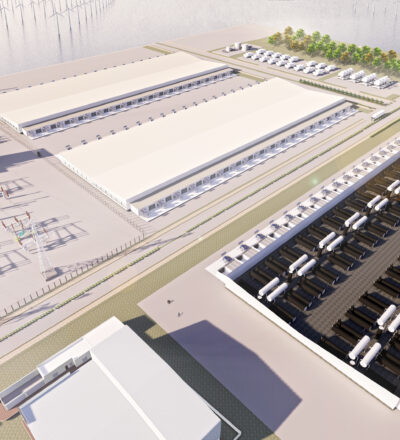Hydrogen is a crucial element -as feedstock and energy carrier- in the chemical, fertiliser and food industry. Water electrolysis from renewable electricity is mature technology for green hydrogen production and contributes to reduction of industrial CO 2 emissions. Scalability, investments and innovation are required to levy the mature technology to the gigawatt level for increasing the competitiveness with natural gas based grey and blue (CCUS) hydrogen.
The current hydrogen consumption in Dutch industry is about 1,500,000 ton, which is expected to grow due to the targets of the Dutch Climate Agreement (Klimaatakkoord). This will lead to higher demand in green hydrogen and upcoming new products/markets, like synthetic fuels and mobility. More renewable electricity is required than the scheduled 11 Gigawatt (GW) offshore renewable production in 2030. In each region in the Netherlands opportunities are present for GW green hydrogen facilities. This also requires investments in electrical, hydrogen and water infrastructure. Efficient integration in industry clusters on GW scale is necessary to realize affordable green hydrogen at industrial scale based on competitive Levelised Costs of Hydrogen. The reality is that present electrolysis plants are modules in the order of megawatt (MW) scale. There is clearly a need for upscaling of modules but also for upnumbering of stacks per modules.
The ISPT Hydrohub Innovation Program carries out innovation in this field and the Hydrohub GW electrolysis project is the landmark project of this program. It delivers an optimised competitive design with blueprints for GW green hydrogen production facilities in 5 different energy and industrial clusters (Regions) in The Netherlands. These regions are Noordzeekanaalgebied,
Northern Netherlands, Zeeland (and Ghent), Chemelot, Rotterdam.
Further technology development is required, which should lead to a cost reduction of green hydrogen of a factor 3 to 4. State of the art PEM (Proton Exchange Membrane) and Alkaline water electrolysis technologies have been considered. Thus, providing the perspective to deliver economically viable green hydrogen production on a GW scale before 2030 and accelerating the hydrogen economy. This will be achieved by developing and applying a science, business and engineering approach. In this report the results of the business approach from a first assessment with regional stakeholders are presented.
Download your free copy
Our publications are free to access. Simply provide your first name and email address to download.
